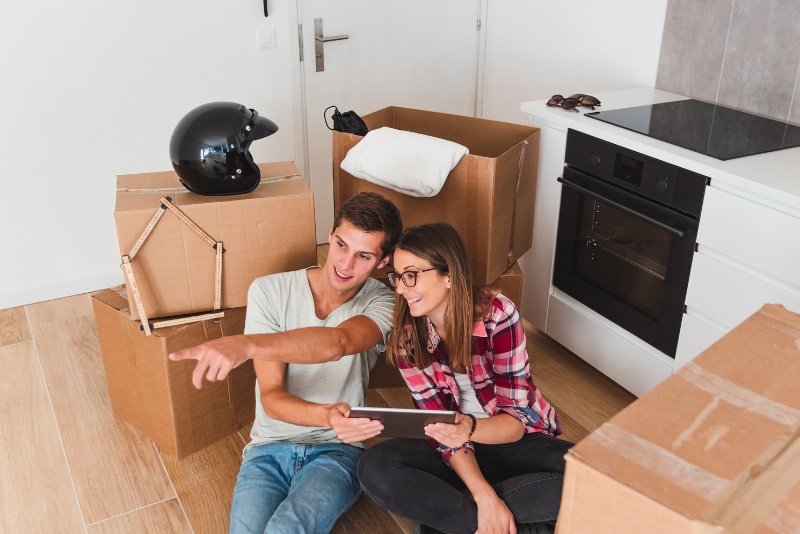Start off by planning your move right by timing out the process of packing up, room by room. The best way to start is with a personal inventory list of all the items in your home listed out on a simple Excel spreadsheet where one column explains the current condition of each item, so you can ensure it is received in the same good condition.
1. Start off packing up the least used rooms and items
The garage is a great example of a “room” you should start with that you can likely pack up without truly missing anything for those last weeks before the move.
The goal here is to avoid packing up constantly needed items. When packing up the garage, start from top to bottom and make sure you are packing up similar items together.
When packing, ensure to label each box. Proper labeling will help the unpacking process go much faster, and ensure the movers offload the correct boxes into the right rooms.
2. Ensure a packing plan timeline
Don’t think it's possible to pack up an entire home in one weekend. Many before you have made this terrible mistake. Unless you have chosen the full packing and unpacking option on iMoving, make sure to plan this out in your schedule and block off the time.
3. Pre-pre proper materials for packing
Having all the bubble wrap ready and boxes unfolded will help give you the push you’ll need to pack. If you need a delivery of cartons, iMoving offers this service.
If you are planning to pack on your own, ensure to have plenty of tape rolls, scissors, and cartons on hand! Don't forget a permanent marker or 10 for labeling!
Pro tip: Keep plastic bags on hand for loose items that could get lost in a big box.
4. Tackle the kitchen in two parts
Usually packing up the kitchen is one of the hardest parts. You’ll need lots of bubble wrap and towels for the breakables and a lot of patience and beer to make it through.
From experience, I would recommend starting early by packing up the big items you are not likely to really need in the next few weeks such as the mixers, food processor, dishes that are not used on the daily, and any extras you have lying around.
Leave only the main kitchen gear you truly use such as your daily egg pan, silverware, glasses, plates and bowls, and the other basics. Make sure to always label everything as detailed as possible.
5. Home office focus goals
- Make sure you don’t pack too many heavy items like stacks of paper all in the same box. Overstuffing a box that breaks won’t get you any closer to your goal.
- If you are packing up things with lots of wires make sure to label and group them together so you can successfully reassemble everything at your new place.
- Keep important documents and work items aside in a bag of essential items.
6. Backyard plans
- Things in the backyard are usually simple to pack and the backyard can be one spot you pack up before or after the garage. Whether it be the grill or the silly decor, pack it up or get rid of it.
- Clean all backyard furniture and dust it down before packing it up.
- Plants can be problematic for movers, so it’s a good idea to move them on your own in your car or with a wagon behind your car. You’ll likely be back and forth from the new home, so take the opportunity to bring a few with you each time. If your move is to a new far away state, it may be best to gift them to your neighbors.
7. Bedrooms
Packing up the bedrooms should be done in two stages, one of the less used items such as the closet’s seasonal items not in use and drawers of items not frequently used can be boxed up as part of phase one.
Before breaking things into phase two, make sure to set aside your bag of essential items such as an extra bedding set, a few day's outfits, and basic items.
- Put bedding and pillows in plastic bags to avoid dust and dirt.
- Keep valuables in your essentials bag so nothing goes missing.
- Don’t separate between items that come in pairs such as shoes.
- Don’t over-stuff the shoe box. A heavy-weight box is likely to tear.
Pro-tip: Leave your clothes on their hangers and throw them directly into the boxes to save time of unhanging and rehanging everything.
8. Bathrooms
- Make sure every item you pack up and put into boxes is fully closed.
- Liquid items will best be packed by wrapping them in a plastic bag and then putting them in the carton just in case of spills.
- Again in the bathrooms, make sure to keep essential items like deodorant aside so you don’t stink up the place.
- Take any medicines you take on the regular out and immediately put them in your essentials bag.

